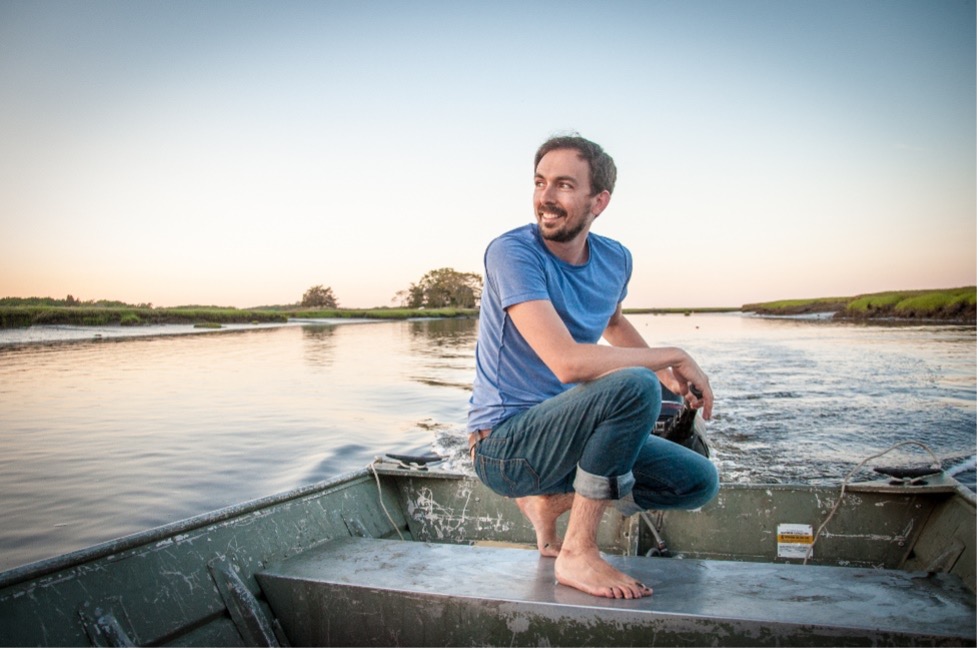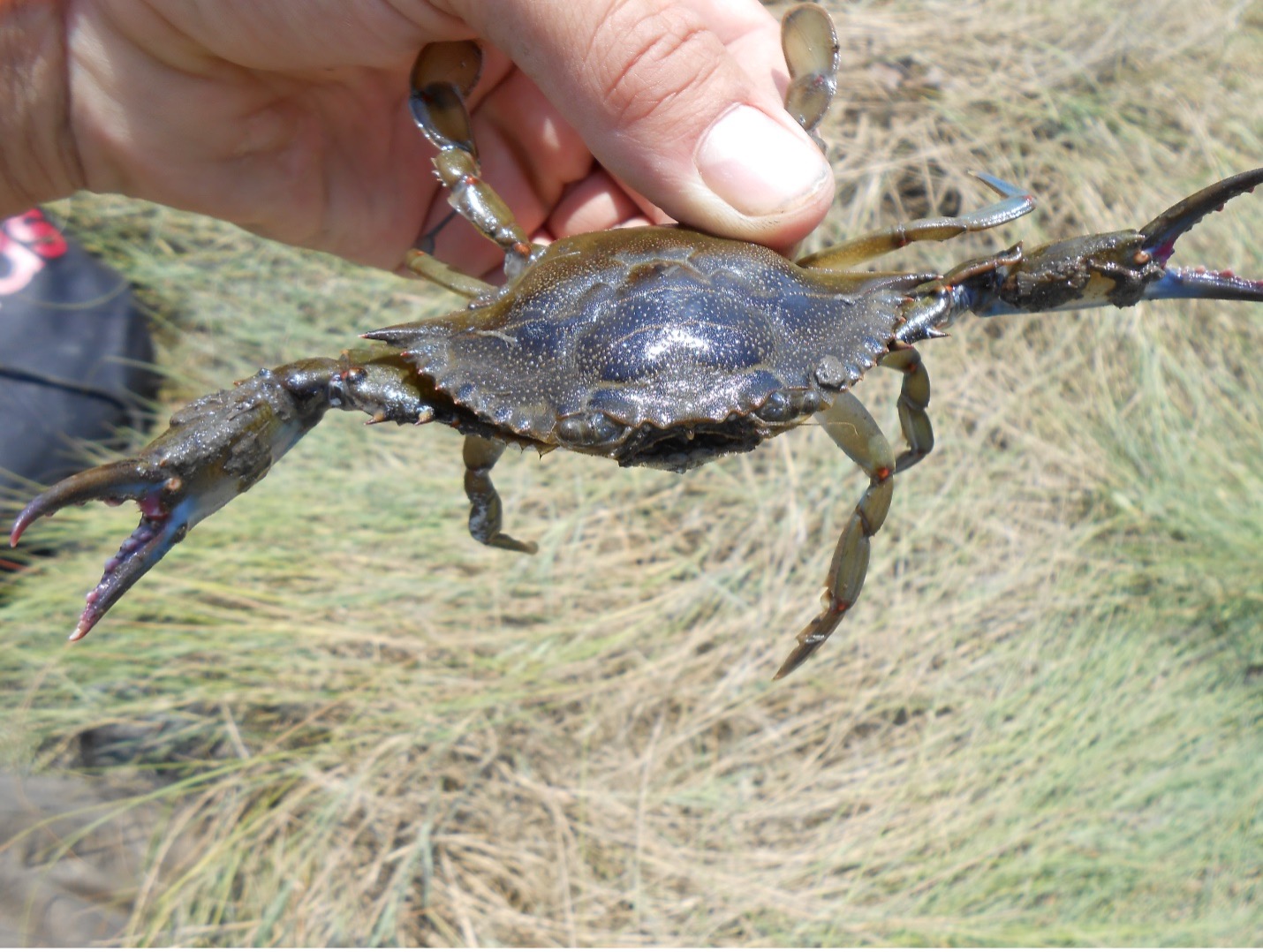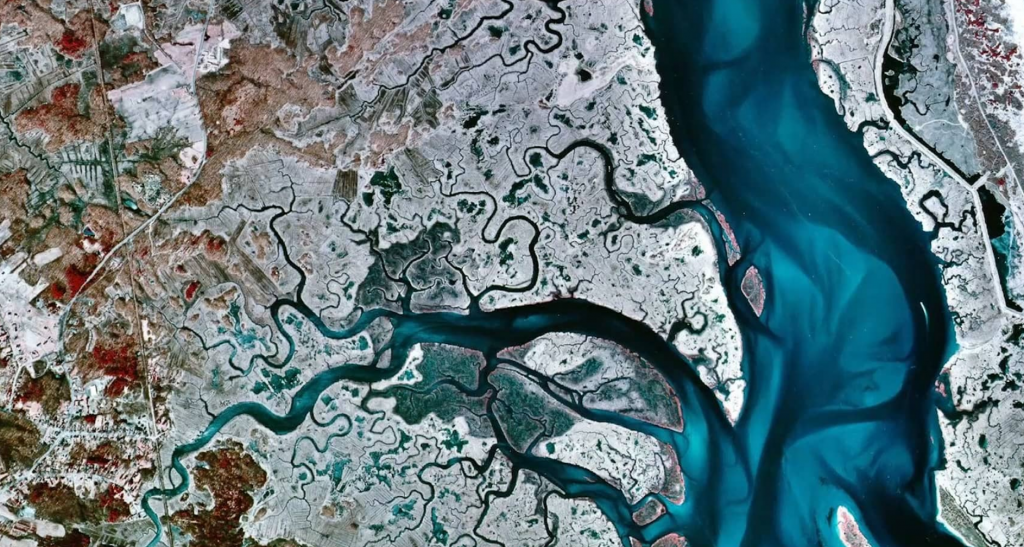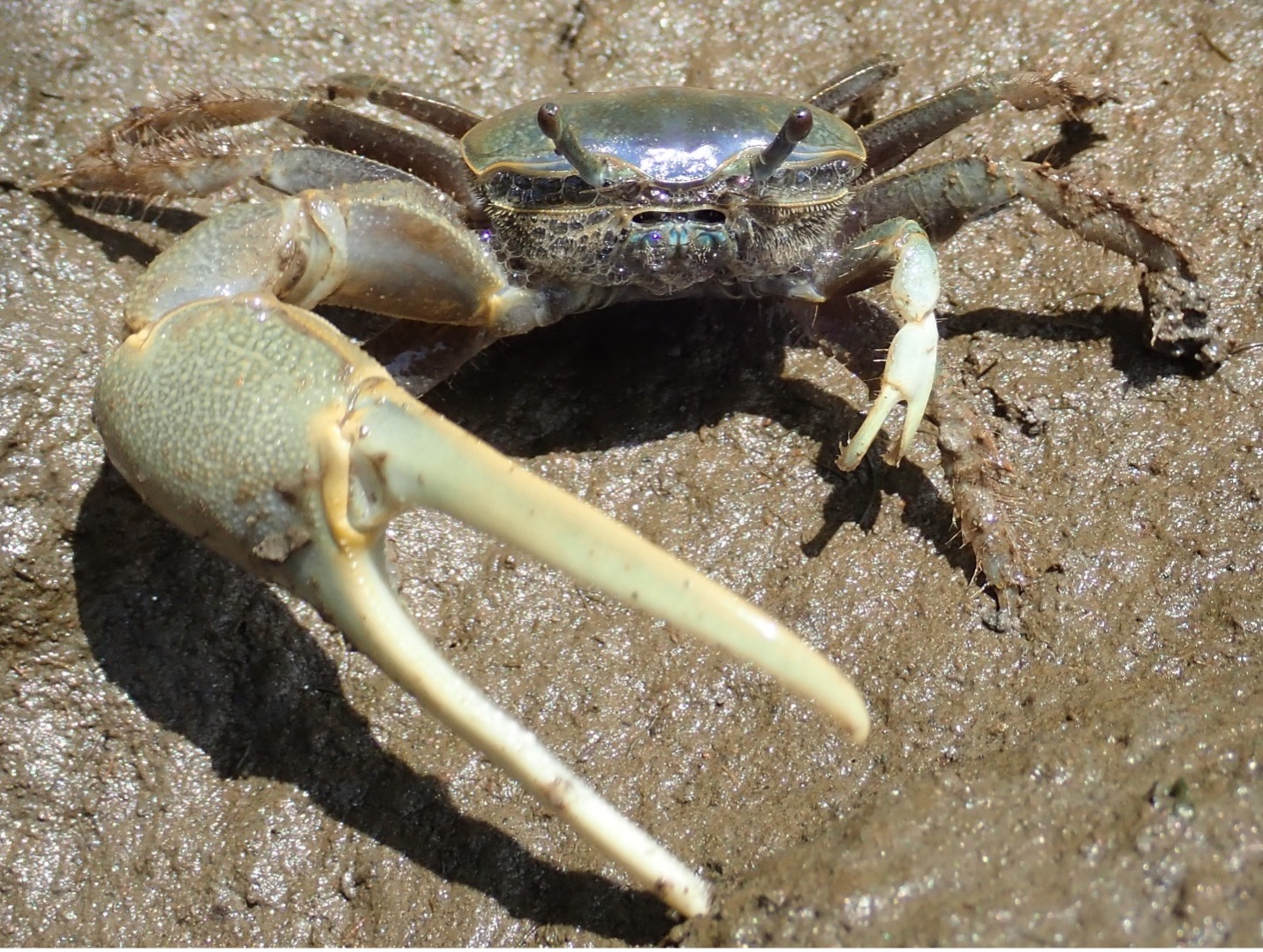Crabby New Neighbors: Climate Change in the Plum Island Ecosystem

The United Nations observes the International Day of Biological Diversity annually on May 22 to increase understanding and awareness of biodiversity issues and how human impacts such as climate change are affecting the health, vitality, and longevity of ecosystems around the globe.
A changing climate means changing habitats. For the Plum Island ecosystem north of Boston, it means some new, unexpected residents have moved into the marsh.
Since 2003, marine ecologist David Johnson has spent time doing field work in the Plum Island Ecosystem, a long-term ecological research station (LTER) administered by the Marine Biological Laboratory (MBL) Ecosystems Center. He knows the mud, the sky, the water — he likes to think of it as his marsh.
 David Johnson in the Great Marsh in northeast Massachusetts. Photo Credit: Danito Jo Talbot
David Johnson in the Great Marsh in northeast Massachusetts. Photo Credit: Danito Jo TalbotSo in 2012, when a colleague at the Plum Island field house said they saw a blue crab (Callinectes sapidus) swimming in the river, Johnson was skeptical to say the least. Historically, Cape Cod has been the northernmost range of the blue crab’s habitat. The Plum Island Ecosystem research station is 50 miles north of Boston.
“I needed proof,” says Johnson. And one day I was walking in the bottom of the marsh at low tide and, sure enough, I saw a crab swimming and I knew…” Blue crabs, which have two paddle-like fins on their back legs, are very distinctive swimmers. Their genus name Callinectes, actually means “beautiful swimmer.”
“So I walked around with a net at low tide, just hunting little pools in the marsh. And I found a few more and then I started asking around in the area and it turns out that people had been finding them as far north as Nova Scotia,” says Johnson, who worked at MBL from 2009-2014 before moving to William & Mary’s Virginia Institute of Marine Science. He still does field work in the Plum Island Ecosystem LTER.
 The blue crab (Callinectes sapidus) found in a salt marsh in Ipswich, Massachusetts, 60 miles north of where it has been found historically. Blue crabs are typical of Chesapeake Bay and are the crab that make up the famous Maryland crab cakes. Now this species can be found north of Boston and into Canada because of ocean warming. Photo credit: David S. Johnson
The blue crab (Callinectes sapidus) found in a salt marsh in Ipswich, Massachusetts, 60 miles north of where it has been found historically. Blue crabs are typical of Chesapeake Bay and are the crab that make up the famous Maryland crab cakes. Now this species can be found north of Boston and into Canada because of ocean warming. Photo credit: David S. JohnsonHistorically, Cape Cod has been a natural barrier for many species. The waters above the peninsula have been too cold for the larvae of the species to thrive into adulthood. But thanks to climate change, that barrier is moving further and further northward as ocean temperatures warm. Sea surface temperatures in the Gulf of Maine are warming faster than almost any other place in the ocean.
In a 2015 paper, the Gulf of Maine Research Institute said that sea surface temperatures in the Gulf of Maine are warming 99% faster than sea surface temperatures on the rest of the planet and will rise more than 4oF by the end of the century under a high-emissions scenario and 2oF under a low-emissions scenario.
“We’re still finding blue crabs up there today, So it’s not just a fluke, the blue crabs are here to stay,” says Johnson.
Scientists have a term for species like the blue crab, which have altered their habitat as a direct result of climate impacts — climate migrants.
“We aren’t just seeing it here, we’re seeing it throughout the world. We’ve documented thousands of climate migrants throughout the world,” says Johnson. “It’s not just inevitable. It’s happening. We’re seeing it happening in species right now as the climate changes.”
This is why long-term research is so vital. Scientists can’t know how ecosystems are impacted by climate change, from new species to warmer temperatures, without a long-term historical baseline. In 1980, the National Science Foundation launched the LTER program to “address ecological questions that cannot be resolved with short-term observations or experiments.” It has swelled from just six LTER sites in 1980 to 28 LTERs across 17 states, Puerto Rico, Antarctica, and French Polynesia. MBL-led research sites at Plum Island, Mass., and Toolik Lake, Alaska, are part of the LTER program.
 Aerial view of the Plum Island Ecosystems LTER. Courtesy PIE-LTER.
Aerial view of the Plum Island Ecosystems LTER. Courtesy PIE-LTER.“If we hope to understand and quantify how ecological systems will respond to environmental change, we need long-term studies,” says Anne Giblin, director of the MBL Ecosystems Center and principal investigator of the Plum Island Ecosystems LTER.
Research at Plum Island focuses on estuaries and watersheds—understanding how these vital ecosystems respond to changes in climate, land use, and sea level, and—eventually—applying that knowledge into policy recommendations. The marshes and estuaries behind Plum Island is the largest remaining estuary in the northeastern United States.
“Many ecological changes are slow and can’t be understood by taking data over one or two years,” says Giblin. “It may take decades before we can determine what is happening with enough confidence to make predictions on what will happen in the future or be able to extrapolate our findings to other locations.”
The blue crab isn’t the only new resident of Plum Island. In 2014, just two years after the blue crab bombshell, another crab scurried across the mud and caught Johnson’s notice. A male fiddler crab (Uca pugnax), with its distinctive claw pattern of one large and one small—also more than 50 miles north of its historical natural range.
 The mud fiddler crab (Minuca pugnax) in a salt marsh in Rowley, Massachusetts, 60 miles north of where it has been found historically. This species is expanding its distribution north because the ocean is warming. Photo credit: David S. Johnson
The mud fiddler crab (Minuca pugnax) in a salt marsh in Rowley, Massachusetts, 60 miles north of where it has been found historically. This species is expanding its distribution north because the ocean is warming. Photo credit: David S. Johnson“We’re talking about a marsh that’s been around for thousands of years. And this (2014) is the first reported observation of a fiddler crab in this marsh,” says Johnson. Since then, Johnson and his team have tracked the population and the number of fiddler crabs increased at least six-fold since their first sighting.
“The density is not very high right now, which makes it the perfect opportunity to study them so we can start understanding the impacts [they might have] on the marsh,” says Johnson.
It’s not that the whole populations of blue crabs and fiddler crabs are shifting northward, their southernmost range hasn’t changed. Their range is simply expanding. And scientists don’t know yet what the impacts could be on the areas these species are moving into.
“Just the presence of a new organism is going to have an impact, so we’re just trying to understand how big that impact is,” says Johnson. “This is the exact reason you have an LTER, so you can capture an event like this. This new neighbor. This change in diversity in your ecosystem. You can pinpoint when it happens and then follow it.”
Citizen Science
Have you seen blue crabs or fiddler crabs north of Cape Cod? You can help ongoing research by reporting your sighting on the iNaturalist app.